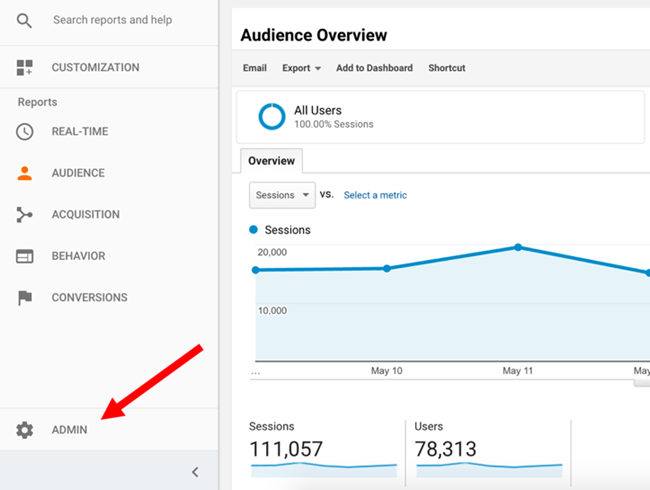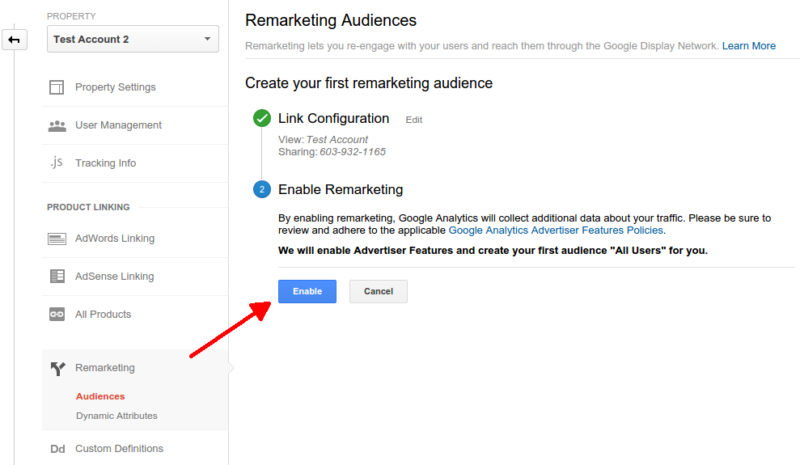Remarketing in Google Analytics: Transforming Site Visitor Information Into Sales
The ability to specifically target audiences based on their behavior and preferences opens up doors to a realm of possibilities, moving businesses towards lasting development and profitability. With a meticulous analysis of site visitor activities and a tailored remarketing strategy, services can browse the digital landscape with accuracy and finesse, untangling the true potential of their on the internet visibility.

Advantages of Remarketing in Google Analytics
Remarketing in Google Analytics provides organizations the chance to reconnect with site site visitors that have actually shown interest in their service or products, thus boosting brand name exposure and conversions. By leveraging this effective tool, services can stay top-of-mind with prospective clients that have actually currently involved with their web site. One of the crucial advantages of remarketing is the ability to target certain target markets based upon their habits on the website, permitting for individualized messaging and customized ad campaign.
In addition, remarketing in Google Analytics can assist companies raise their conversion prices by re-engaging with site visitors who may not have actually bought or finished a preferred action on the website throughout their initial see. This targeted strategy can lead to higher conversion prices and inevitably drive even more sales. In addition, remarketing can also assist organizations develop brand loyalty and count on by keeping regular communication with prospective clients throughout their buying trip.
Establishing Remarketing Projects
When launching remarketing campaigns in Google Analytics, businesses require to thoroughly prepare and carry out tactical targeting tactics to effectively reach their wanted audience. The primary step in establishing remarketing projects is to define clear goals. Whether the objective is to boost web site conversions, advertise specific items, or elevate brand understanding, having a well-defined objective will guide the entire campaign method.
Following, companies need to produce audience checklists based upon specific standards such as web site visitors, customers that abandoned their shopping carts, or those who engaged with particular web content. These lists permit targeted messaging customized to each sector of the audience, increasing the chances of conversion.

Last but not least, businesses should set up conversion monitoring to gauge the success of their remarketing campaigns properly. By evaluating the performance data, companies can enhance their campaigns for better outcomes and greater ROI.
Leveraging Target Market Segmentation for Remarketing
Utilizing target market division is an essential method for improving the efficiency of remarketing campaigns in Google Analytics (What Is “Remarketing” In Google Analytics?). By separating your website visitors right into distinct teams based on their behavior, demographics, or passions, you can tailor your remarketing initiatives to target these details sectors with relevant ads. Target market division allows you to create even more personalized and targeted projects, increasing the opportunities of re-engaging site visitors and driving conversions
Segmenting your audience allows you to supply tailored messaging that resonates with each group's needs and choices. For instance, you can produce different remarketing listings for users who deserted their shopping carts, went to details product web pages, or downloaded and install a specific resource. By comprehending the different inspirations and rate of interests of these sectors, you can craft engaging ad creatives that are most likely to catch their attention and prompt them to revisit your website.
In addition, target market segmentation likewise helps you enhance your ad spend by concentrating on high-value sectors that are a lot more most likely to convert - What Is “Remarketing” In Google Analytics?. By evaluating the efficiency of each section, you can allot your budget plan better and make the most of the return on your remarketing investment
Analyzing Remarketing Efficiency Metrics
To properly review the success of remarketing projects in Google Analytics, evaluating essential efficiency metrics is vital. Metrics such as click-through rate (CTR), conversion price, expense per procurement (CERTIFIED PUBLIC ACCOUNTANT), and return click this on advertisement spend (ROAS) supply beneficial understandings right into the efficiency of your remarketing initiatives. CTR suggests the portion of users who clicked your ad after seeing it, showing the advertisement's significance and interest your target market. Conversion price gauges the percent of individuals who completed a wanted action, such as making an acquisition, after clicking on your advertisement. CPA assists establish the cost of getting a client via your remarketing project, while ROAS examines the earnings created for each and every dollar invested in advertising. By evaluating these metrics, you can recognize areas for renovation, enhance your campaigns, and allot budget plan extra successfully to make the most of the ROI of your remarketing approaches in Google Analytics.

Finest Practices for Remarketing Success
Building on the foundation of examining remarketing performance metrics, executing finest practices is vital to attaining success in your remarketing ventures. One important ideal practice is to sector your target market properly. By dividing your audience based upon their behavior, demographics, or passions, you can develop customized messaging that resonates with each sector, inevitably boosting the likelihood of conversion. In addition, make sure that your remarketing ads are aesthetically appealing and have compelling phone call to activity. Catching the customer's interest and motivating them to take the preferred activity is necessary.
Pestering users with the same advertisement consistently can lead to aggravation and reduced performance. Monitor your campaigns regularly, evaluate the information, and make data-driven decisions to continually improve your remarketing initiatives for maximum effect.
Verdict
Finally, remarketing in Google Analytics uses organizations the chance to utilize visitor data to enhance sales and drive conversions. By utilizing audience division, assessing efficiency metrics, go right here and executing finest practices, companies can customize their remarketing efforts to target high-value segments properly. Through engaging advertisement creatives and conversion monitoring, organizations can develop brand commitment and count on, eventually making best use of the impact of their marketing strategies.
Via a careful analysis of visitor actions and a tailored remarketing approach, organizations can browse the electronic landscape with accuracy and finesse, unwinding the true capacity of their on the internet existence.
One of the key advantages of remarketing is the capability to target details audiences based on their actions on the site, allowing for individualized messaging and tailored advertising and marketing projects.
In addition, remarketing can likewise help organizations build brand loyalty and trust fund by keeping constant communication with possible consumers throughout their purchasing trip.
Metrics such as click-through price (CTR), conversion price, expense per procurement (CERTIFIED PUBLIC ACCOUNTANT), and return on advertisement invest (ROAS) offer important insights into the effectiveness of your remarketing initiatives. By examining these metrics, you can determine locations for renovation, optimize your campaigns, and allocate budget plan a lot more efficiently to make the most of visit the site the ROI of your remarketing approaches in Google Analytics.